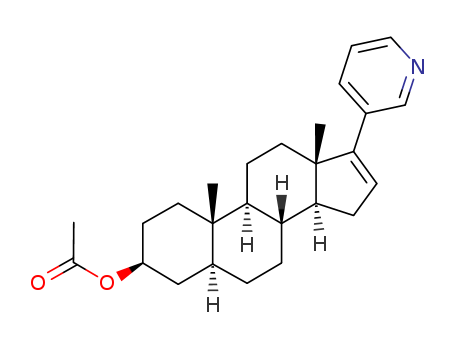- Chemical Name:Androst-16-en-3-ol, 17-(3-pyridinyl)-, acetate (ester),(3β,5α)-
- CAS No.:219843-76-2
- Molecular Formula:C26H35NO2
- Molecular Weight:393.5616
- Hs Code.:
- Mol file:219843-76-2.mol
Synonyms:Androst-16-en-3-ol, 17-(3-pyridinyl)-, acetate (ester),(3β,5α)-





